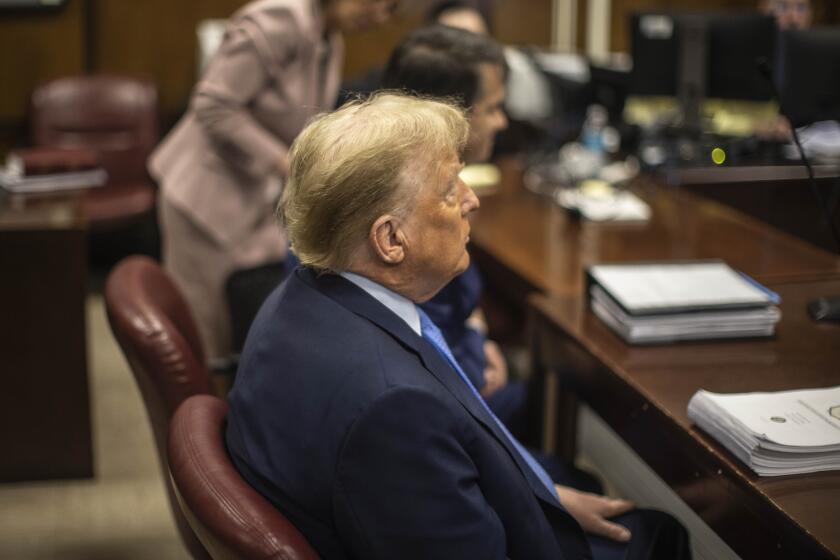Prime Rate Hits 8.25%; Boost by Major Banks Is 3rd Since End of March
Many of the nation’s largest banks raised the prime lending rate to 8.25% from 8% Friday in the third quarter-point hike since rates began inching up at the end of March.
The rise reflected increasing inflation and a general expectation that the Federal Reserve Bank will soon raise the discount rate, the rate it charges for loans to member banks, economists said. Chase Manhattan Bank, the nation’s third-largest, was first to announce a rate rise, followed by Citibank, Bank of America, Manufacturers Hanover Trust, Chemical Bank and others.
The rate rise will “further discourage housing starts and other activity and contribute to a general weakening of the economy,” said Jay Levy, chief economist at Levy Economic Forecasts in Chappaqua, N.Y.
The prime rate is the benchmark used to set interest rates on a number of corporate and consumer loans, though the largest corporations can borrow at far lower rates.
Part of the impetus for the rise came from the government’s announcement Friday of a sharp jump in a key inflation indicator. The Labor Department said its producer price index rose 0.7% in April, substantially more than the 0.4% increase that was generally expected, according to David Rolley, chief economist at Wharton Econometrics in Bala Cynwyd, Pa.
“That’s a terrible number,” Rolley said.
Bond Brices Sink
The prime rate increase and the news of the rise in the producer price index drove bond prices down sharply and spurred a selloff in sales of a variety of interest-rate sensitive stocks, including those of banks, thrifts, utilities and insurance companies.
The Federal Reserve Board has taken some preliminary moves to tighten credit, in hopes of holding down inflation and halting the fall of the dollar. But, so far, it has been reluctant to increase the discount rate for fear of further slowing the shaky economy and compounding the difficulties of Third World nations struggling to pay debts, economists said.
“They may not be able to hold out too much longer,” said Allen Sinai, chief economist at Shearson Lehman Bros. He said some Fed members have hoped to delay the discount rate increase until some other nations--notably West Germany and Japan--agree to raise rates in their countries, to ease the effect of such a move on the U.S. economy.
But Sinai said the Fed’s delay comes at a price, for it has allowed fears of inflation to grow and prompted some businesses to raise prices in anticipation of rises in their costs. “They’re letting inflationary expectations increase dangerously,” he said.
Sinai said the prime rate increase was widely expected and predicted that the rate may be driven up to 9% by late summer.
Higher Borrowing Costs
A number of other key interest rates have been rising in recent weeks, including the Fed’s rate on short-term loans and rates on commercial borrowings. Those increases have driven up what it costs the banks to borrow.
“The banks feel they’re not the bad guys but that they’re just bringing their rates in line with what it costs them,” said Georges F. Rocourt, chief economist at Mercantile Safe Deposit & Trust Co. in Baltimore.
Banks have historically kept the prime rate about 2 points above rates on short-term corporate borrowings, Wharton’s Rolley said. Now, however, these so-called commercial paper rates are at about 6.8%, suggesting that the banks may want to increase the prime rate further.
The gradual rise in interest rates over the past three months has already lifted rates on fixed-rate mortgages to between 10.5% and 11% from a range of 9% to 9.5% in March.
Among other banks that announced prime rate increases to 8.25% Friday were Security Pacific, Bankers Trust, First National Bank of Chicago, Marine Midland, Mellon, Bank of New York and Irving Trust.
More to Read
Start your day right
Sign up for Essential California for news, features and recommendations from the L.A. Times and beyond in your inbox six days a week.
You may occasionally receive promotional content from the Los Angeles Times.







